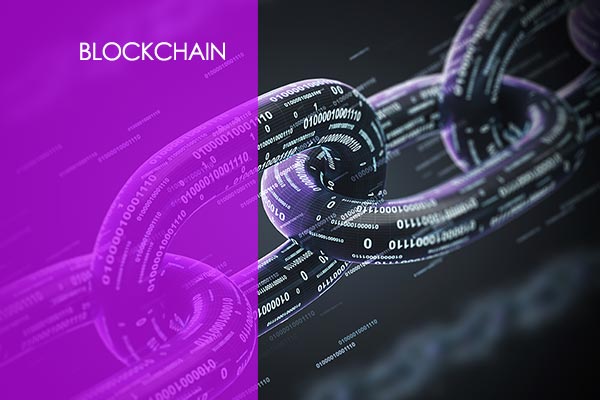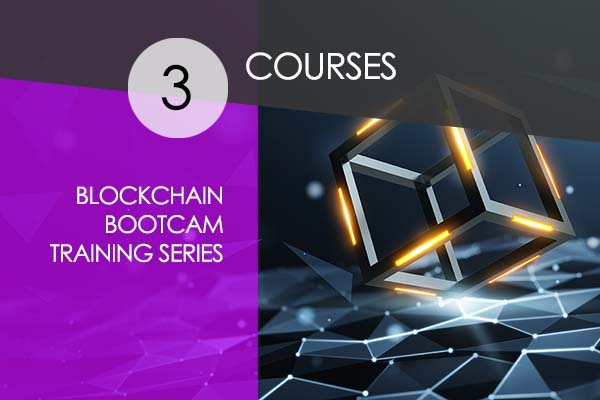Blockchain technology has evolved beyond its origins in cryptocurrencies and is now a pivotal component of innovative solutions across diverse industries. Its unique characteristics, including transparency, security, and efficiency in managing data and transactions, have spurred a surge in blockchain app development. This guide explores the intricacies of blockchain application development, offering a comprehensive roadmap for businesses and developers eager to harness this transformative technology.
Key Points:
- Transparency: Blockchain ensures that all transactions and data are visible to all participants in the network, enhancing trust and reducing the risk of fraud.
- Security: The cryptographic nature of blockchain technology makes it highly resistant to tampering and hacking, providing a secure environment for digital transactions.
- Efficiency: Blockchain streamlines processes by eliminating intermediaries, reducing costs, and accelerating transaction speeds.
Pioneering Blockchain App Development
Blockchain app development is rapidly advancing, offering a multitude of opportunities for businesses to create robust, decentralized applications. It extends beyond creating digital currencies to developing applications that serve various purposes, including supply chain management, secure transactions, and identity verification.
Key Points:
- Diverse Use Cases: Blockchain applications can address a wide range of use cases, from verifying the authenticity of luxury goods to enabling cross-border remittances.
- Decentralization: These apps operate on decentralized networks, removing the need for central authorities and increasing trust among users.
- Immutable Records: Transactions recorded on the blockchain are permanent and cannot be altered, ensuring data integrity.
The Art of Blockchain Application Development
Developing blockchain applications demands a profound understanding of the underlying technology. It is both an art and a science, requiring a creative approach to problem-solving within the technical constraints and capabilities of blockchain technology.
Key Points:
- Creative Problem-Solving: Developers must think creatively to design solutions that leverage blockchain’s unique features.
- Technical Expertise: A deep understanding of blockchain’s architecture, consensus mechanisms, and smart contracts is crucial.
- User-Centric Approach: Applications should prioritize user experience while maintaining the security and transparency of the blockchain.
From Concept to Reality: Blockchain-Based Solution First Steps
The initial step in creating a blockchain-based solution is understanding the problem you aim to solve. Whether it involves enhancing cross-border payments’ efficiency or ensuring product authenticity in a supply chain, the initial stages entail defining the scope and objectives of your blockchain solution.
Key Steps:
- Problem Identification: Thoroughly analyze the problem or inefficiency you intend to address with the blockchain.
- Scope Definition: Clearly outline the boundaries and goals of your blockchain-based solution.
- Objective Setting: Establish specific objectives to achieve with the solution, such as increased transparency or reduced costs.
Real-world Example: In the realm of environmental conservation, blockchain can be used to track the origin and sustainability of products. Consumers can make informed choices by supporting brands committed to eco-friendly practices.
Certified Blockchain Developer – Hyperledger (CBDH)
Seize the future with our Certified Blockchain Developer – Hyperledger (CBDH) course! Ideal for engineers and developers, this course is your ticket to Blockchain Training Alliance Certification. Master blockchain now and lead the tech revolution!
How to Develop Blockchain Applications
Developing blockchain applications involves a series of crucial steps: ideation, selecting the right blockchain platform, designing the architecture, and coding smart contracts. Blockchain mobile app development also necessitates a focus on user experience and integration with mobile device capabilities.
Key Steps:
- Ideation: Brainstorm and conceptualize the unique features and functionality of your blockchain application.
- Platform Selection: Choose a suitable blockchain platform based on your project’s requirements, such as Ethereum, Hyperledger, or Binance Smart Chain.
- Architecture Design: Plan the technical structure, including databases, consensus mechanisms, and smart contract logic.
- Smart Contract Development: Code the smart contracts that govern the rules and logic of your application.
- User-Centric Approach: Ensure the application is user-friendly and integrates seamlessly with mobile devices.
Real-world Example: Picture a decentralized voting system built on blockchain technology, ensuring the integrity of elections and enabling secure, remote voting for citizens around the world.
Building the Foundation: How to Build Blockchain Application
The foundation of building a blockchain application lies in meticulously designing its architecture. This process entails selecting a suitable blockchain platform that can meet the application’s demands in terms of transaction speed, security, and scalability. For those contemplating how to build a blockchain application, understanding the network’s consensus mechanism and the smart contract functionality governing transaction rules is paramount.
Key Steps:
- Architecture Design: Carefully plan the technical structure of your application, including choosing the appropriate blockchain platform.
- Consensus Mechanism: Understand the consensus mechanism that ensures agreement among network participants, such as Proof of Work (PoW) or Proof of Stake (PoS).
- Smart Contract Logic: Develop smart contracts that automate and enforce the rules of transactions on the blockchain.
- Transaction Rules: Define clear rules and logic for transactions, including how data is recorded and validated.
Real-world Example: Supply chain networks can greatly benefit from blockchain applications, as they offer end-to-end visibility, reducing the risk of fraud and ensuring the authenticity of products at every stage.
Blockchain Software Development: The Technical Backbone
Blockchain software development forms the technical backbone that supports the application. This includes creating the core blockchain protocol, developing smart contracts, and implementing front-end interfaces that interact with the blockchain.
Key Components:
- Core Blockchain Protocol: Develop the fundamental blockchain infrastructure that ensures secure data storage and transaction validation.
- Smart Contract Development: Code smart contracts to automate processes and execute predefined actions.
- User Interfaces: Create intuitive front-end interfaces that allow users to interact with the blockchain seamlessly.
Real-world Example: Financial institutions can utilize blockchain to streamline cross-border payments, reducing the time and costs associated with traditional banking systems.
Blockchain Bootcamp Training
Unlock unparalleled career growth with our Blockchain Bootcamp, designed for those on the technical frontline. Dive into three cornerstone courses: Certified Blockchain Developer Hyperledger (CBDH), Certified Blockchain Solutions Architect (CBSA), and Enterprise Blockchain Bootcamp for Solutions Engineers. Gain the technical skills and certifications you need to excel in a blockchain-driven world. Whether you’re interfacing with large VARs, Vendors, or Integrators, this bootcamp equips you to be the go-to blockchain expert.
Crafting Your Unique Blockchain with How to Create a Blockchain
For those seeking a customized solution and wondering how to create a blockchain, the process involves designing a protocol tailored to specific needs. Create blockchain systems tailored to your requirements, whether for a public, private, or consortium network.
Key Steps:
- Customized Blockchain Protocol: Design a blockchain protocol that aligns with your project’s unique requirements and goals.
- Network Type: Determine whether your blockchain will be public, private, or a consortium, based on the desired level of accessibility and control.
Real-world Example: A consortium of healthcare providers can collaborate on a blockchain network to securely share patient data, improving treatment outcomes and medical research.
The Anatomy of Block Chain Development
Block chain development revolves around constructing decentralized networks that facilitate peer-to-peer transactions without intermediaries. Understanding the intricacies of blockchain’s structure, including blocks, chains, miners, and nodes, is fundamental to creating a robust blockchain.
Key Components:
- Blocks and Chains: Transactions are grouped into blocks, which are linked together to form an immutable chain.
- Miners and Nodes: Miners validate transactions and add them to the blockchain, while nodes maintain copies of the entire blockchain network.
Real-world Example: Real estate transactions can be expedited and made more transparent through blockchain, reducing the need for intermediaries and associated fees.
Blueprint to Create Your Own Blockchain
Creating your own blockchain involves establishing a complete ecosystem, not limited to chain development but also encompassing maintenance, governance, and continuous improvement.
Key Elements:
- Ecosystem Establishment: Build a robust ecosystem that includes network participants, maintenance protocols, and governance structures.
- Maintenance and Governance: Ensure ongoing maintenance, updates, and governance mechanisms to keep the blockchain operational and secure.
Real-world Example: Governments can explore blockchain solutions for identity management, ensuring secure and efficient services for citizens while preventing identity theft.
Development of Blockchain: Evolving with Time
Blockchain technology’s evolution is an ongoing process. As the technology matures, so do the methods and practices involved in creating more sophisticated and efficient blockchain networks.
Key Point:
- Ongoing Evolution: Blockchain technology continually evolves, leading to advancements in scalability, security, and usability.
Real-world Example: Energy companies can utilize blockchain to track the production and distribution of renewable energy, promoting sustainability and reducing carbon emissions.
Crypto Development: Beyond Currency
Crypto development extends beyond cryptocurrencies to include decentralized finance (DeFi) applications, non-fungible tokens (NFTs), and other blockchain-driven innovations.
Key Areas:
- Decentralized Finance (DeFi): DeFi applications offer financial services, such as lending, borrowing, and trading, without reliance on traditional banks.
- Non-fungible Tokens (NFTs): NFTs represent unique digital assets, enabling ownership and provenance tracking for digital art, collectibles, and more.
Real-world Example: Artists and creators can tokenize their work as NFTs, enabling them to earn royalties from resales and ensuring fair compensation for their creations.
Certified Blockchain Developer – Hyperledger (CBDH)
Seize the future with our Certified Blockchain Developer – Hyperledger (CBDH) course! Ideal for engineers and developers, this course is your ticket to Blockchain Training Alliance Certification. Master blockchain now and lead the tech revolution!
Starting Your Blockchain Venture: How to Start a Blockchain
Starting a blockchain venture entails clearly defining the purpose and scope, selecting the right framework and tools, and assembling a team with the necessary skills and experience. Pioneering a blockchain from scratch demands deep technical expertise, strategic planning, and a thorough understanding of the blockchain landscape.
Key Steps:
- Define Purpose and Scope: Clearly outline the goals and objectives of your blockchain project.
- Select Framework and Tools: Choose the appropriate blockchain framework and development tools based on project requirements.
- Assemble a Skilled Team: Build a team with expertise in blockchain development, smart contracts, and project management.
Real-world Example: A consortium of financial institutions can collaborate on a blockchain network for real-time, cross-border settlements, reducing delays and costs associated with traditional banking systems.
Frequently Asked Questions for Blockchain Development
What is blockchain technology?
Blockchain technology is a type of distributed ledger technology that records transactions across multiple computers. The unique feature about blockchains is that they’re decentralized and secure, which means no single entity has control over the entire chain. Information, once added to the blockchain, cannot be changed or tampered with, ensuring the integrity of the data. This technology forms the backbone of cryptocurrencies like Bitcoin and Ethereum but has many other potential applications in sectors like finance, supply chain, healthcare, and more.
How does blockchain work?
Blockchain works by storing information in ‘blocks’, which are then linked together in a ‘chain’. Whenever a new transaction occurs, it’s added to a block. Once that block is full (the size varies depending on the blockchain), it is added to the chain, linked to the previous block via a unique identifier called a hash. Every new block contains the hash of the previous block, creating a continuous and tamper-proof chain of blocks. A network of computers, known as nodes, verifies each transaction using consensus algorithms before it’s added to the block, ensuring the integrity and security of the data.
What are smart contracts and how do they relate to blockchain?
Smart contracts are self-executing contracts with the terms of the agreement directly written into lines of code. They automatically execute transactions and agreements without needing a third-party intermediary. Once the predefined rules are met, the smart contract operates accordingly – for example, releasing funds or transferring ownership of assets. Smart contracts exist on the blockchain, which means they’re decentralized and secure. They’re a fundamental aspect of Ethereum and other blockchain platforms, enabling the creation of decentralized applications (DApps) and decentralized finance (DeFi) systems.
What are the potential applications of blockchain technology beyond cryptocurrency?
While blockchain is best known for cryptocurrency, its potential applications extend far beyond that. In finance, blockchain could improve transparency and efficiency in transactions and asset management. In supply chain management, it can enable greater traceability of products from origin to consumer. In healthcare, blockchain can enhance privacy, security, and interoperability of health data. Blockchain can also be used in sectors like real estate for streamlined property transfers, in voting systems for fraud-proof voting, and even in energy for peer-to-peer energy trading. Its ability to ensure secure, transparent, and decentralized transactions and record-keeping makes it an attractive solution for many industries.
Is blockchain development only about cryptocurrencies?
No, blockchain development extends beyond cryptocurrencies to include various applications like smart contracts, decentralized applications (DApps), and more.
Can I create my own blockchain?
Yes, you can create your own blockchain. This involves setting up the initial parameters, designing the consensus mechanism, and developing the necessary software.












